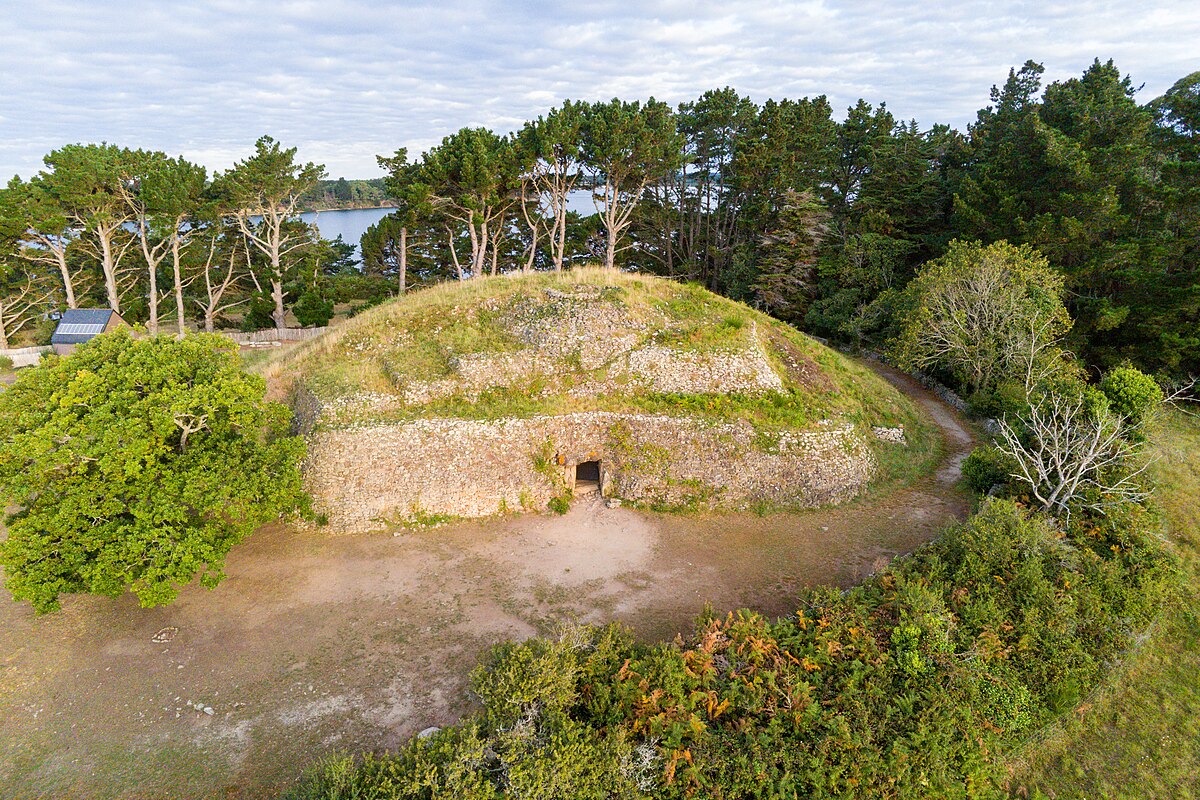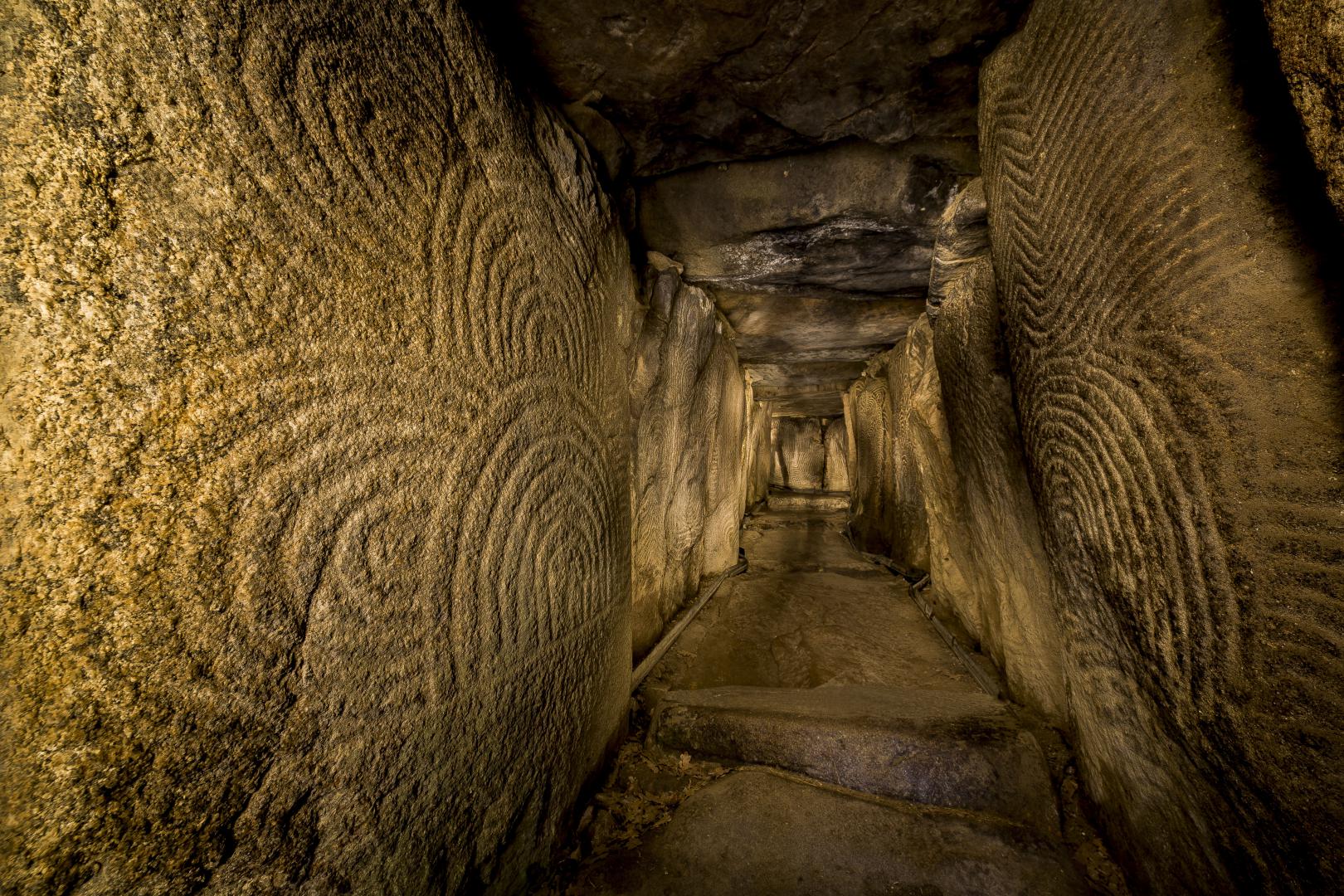Gavrinis: A Megalithic Masterpiece in Brittany’s Gulf of Morbihan
Located on a small island in the Gulf of Morbihan, Brittany, the Cairn of Gavrinis is an extraordinary passage tomb dating back to around 3500 BCE. This monumental structure is not only a testament to the advanced engineering skills of Neolithic communities in northwestern France but also a captivating artistic masterpiece. While from the exterior it appears as an impressive mound of stones, its true wonder lies within, making it one of the most significant megalithic sites in Europe and a must-see for anyone exploring Brittany’s rich prehistoric landscape.

The most striking feature of the Cairn of Gavrinis is its elaborately decorated interior. As visitors enter the long, narrow passage leading to the central burial chamber, they are immediately immersed in a gallery of intricate engravings. The massive orthostats (upright stones) that form the walls and ceiling of the passage are almost entirely covered with abstract patterns, spirals, chevrons, waves, and what appear to be symbolic representations of axes, animals, or celestial motifs. The precision and artistry of these carvings, executed thousands of years ago with simple stone tools, are truly astonishing and speak to a sophisticated belief system and a profound connection to the natural world.

While its primary function was as a burial place, the sheer effort and artistic embellishment suggest that Gavrinis held immense ritualistic and spiritual significance for its creators. The alignment of the passage, possibly with solstices or equinoxes, further hints at astronomical knowledge and a deep understanding of cyclical time. Today, the Cairn of Gavrinis stands as a powerful, tangible link to Europe’s Neolithic past, inviting awe and contemplation. It is a place where ancient art, architecture, and spirituality converge, offering profound insights into the minds and capabilities of our ancestors who shaped this remarkable monument millennia ago.
